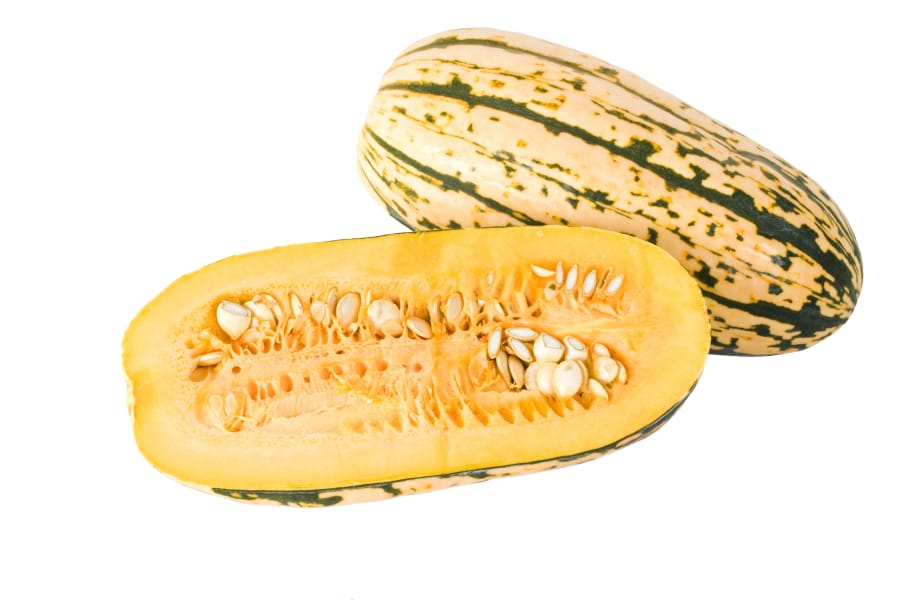Fall season brings a change in weather and the leaves on the trees burst with color, but it also means seeing several squash varieties popping up at the market. So many sizes, shapes and colors to choose from!
A newer variety of squash that is becoming more popular is the delicata (pronounced dehl-ih-CAH-tah). It has a light yellow skin with green striped markings. They are usually about 5-9 inches long and 2-3 inches in diameter. Delicata squash is also called a peanut, bohemian or sweet potato squash. This squash is considered a winter squash, but it is the same species as the zucchini and summer squash. It has the taste similar to butternut squash, but the skin is not as hard and is edible so doesn’t need peeling. This makes it much easier to slice, cut and eat.
Delicata squash were around in the late 1800s but were prone to mildew, so after the Great Depression they became nearly nonexistent. This changed in the early 2000s when the Plant Breeding program at Cornell University bred a variety resistant to typical squash diseases and has produced a hardy variety that we see today.
To select a delicata squash, test the rind with your fingernail. The skin should retain its shape when pressed and the stem should be dry.



